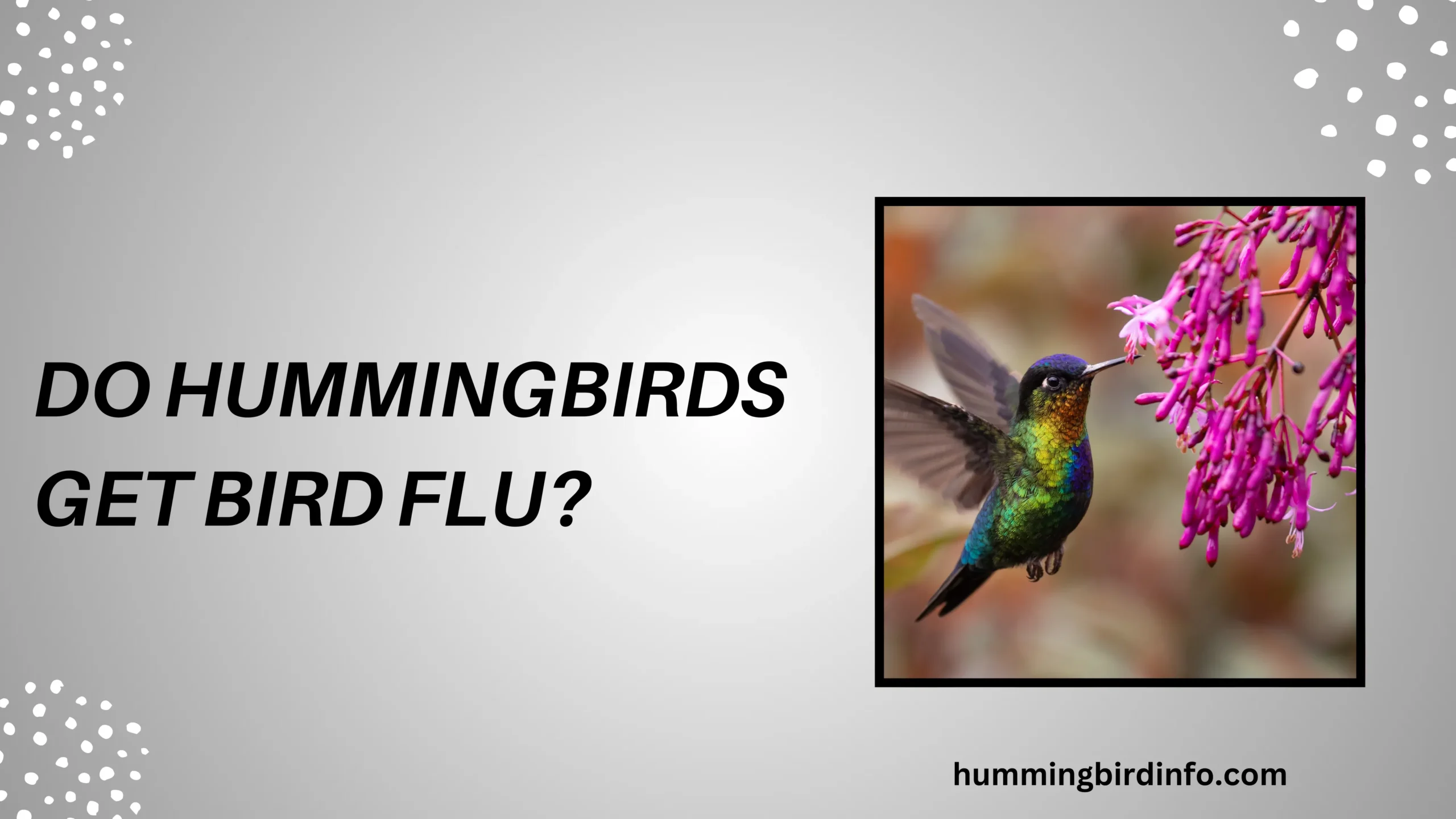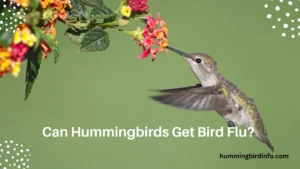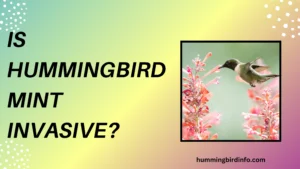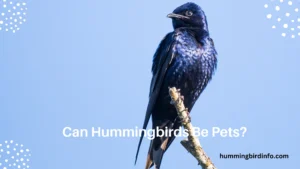The spread of avian influenza, often called bird flu, has raised serious concerns for both domestic poultry and wild birds across the globe. With every new outbreak reported in the news, bird lovers begin to worry—are the tiny, energetic hummingbirds also at risk?
These fragile creatures, known for their nectar-sipping habits and high-speed flight, seem worlds apart from the ducks, chickens, and geese we usually associate with bird flu.
But viruses don’t discriminate. Highly pathogenic avian influenza (HPAI) strains, such as H5N1, have been devastating to many wild bird populations.
Understanding how bird flu spreads and which species are vulnerable is crucial for protecting not just our feathered backyard visitors, but also for preventing broader ecological and even human impacts. It’s natural to wonder whether hummingbirds, with their high-energy lifestyles and constant feeding needs, could be affected.
This blog explores the real risks of bird flu to hummingbirds, what we know so far, and how you can help protect them.
From scientific data to practical feeder hygiene tips, we’ll cover everything you need to understand this important topic—and give you peace of mind next time a hummingbird buzzes by your window.
Contents
- 1 Understanding Avian Influenza
- 2 Bird Species and Susceptibility
- 3 Potential Risks to Hummingbirds
- 4 Precautions and Preventive Measures
- 5 The Uncertain Future and Role of Research
- 6 Conclusion
- 7 FAQs:
- 8 Can hummingbirds catch avian influenza?
- 9 How does bird flu spread among birds?
- 10 What are the symptoms of bird flu in birds?
- 11 Are songbirds like hummingbirds at high risk?
- 12 Can I still use hummingbird feeders during an outbreak?
- 13 What should I do if I see a sick bird?
Understanding Avian Influenza
Avian influenza is caused by influenza A viruses that primarily infect birds but can sometimes spread to other animals. These viruses are classified based on two proteins on their surface: hemagglutinin (H) and neuraminidase (N)—you’ll often see names like H5N1 or H7N9.
There are two main types: low pathogenic avian influenza (LPAI) and highly pathogenic avian influenza (HPAI). While LPAI usually causes mild symptoms, HPAI can lead to high death rates in both domestic and wild birds.
Bird flu spreads through direct contact with infected birds or contaminated secretions like feces or saliva. Surfaces, feeders, and even water can carry the virus, making it hard to control once an outbreak begins.
Birds with avian flu may show signs like respiratory distress, diarrhea, or sudden death. Neurological signs like tremors or balance issues also occur in severe infections.
Outbreaks of HPAI have caused massive mortality events among wild bird populations, particularly among waterfowl and birds that gather in large flocks.
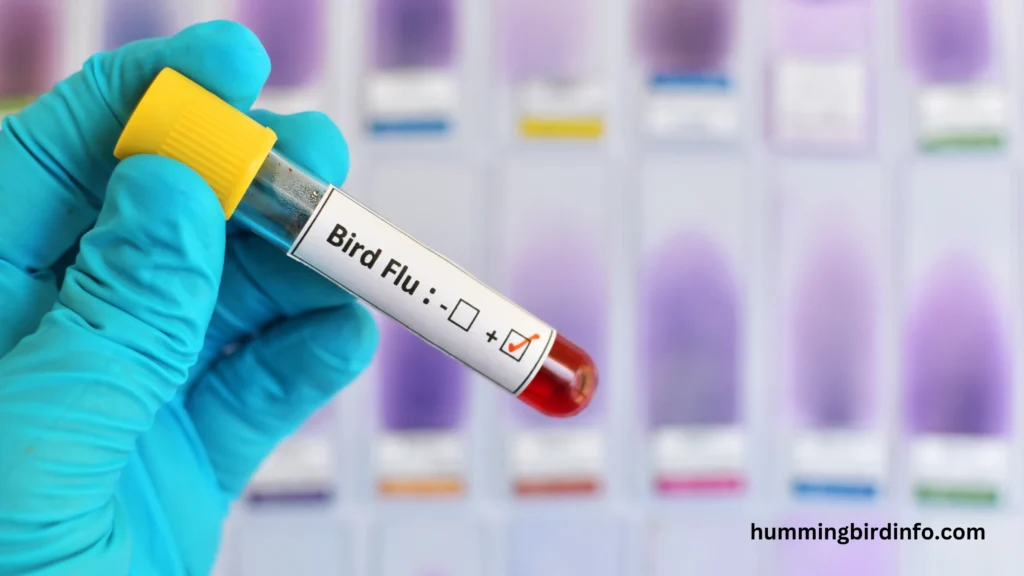
Bird Species and Susceptibility
Wild waterfowl—such as ducks, swans, and geese—are considered the natural reservoirs of avian influenza. They can carry the virus without showing any symptoms and spread it to other species.
Species that are highly susceptible include poultry like chickens and turkeys, raptors like eagles and hawks, and shorebirds and waterbirds. These birds often live in or around water where the virus can thrive.
Songbirds, including hummingbirds, are believed to be at lower risk of contracting bird flu due to their unique feeding habits and lower interaction with infected species.
Hummingbirds feed on nectar from flowers and feeders, which likely reduces their exposure to contaminated carcasses or feces—a major route of virus transmission in other birds.
However, limited research exists. While hummingbirds may be less exposed, they’re not proven immune, and environmental overlap with infected species could pose a hidden threat.
Potential Risks to Hummingbirds
Although hummingbirds don’t mingle with poultry or waterfowl, there are still possible risk factors that need consideration. Shared feeders and water sources might become indirect routes of infection.
If infected birds contaminate a birdbath or shared perch, and hummingbirds visit afterward, virus transmission could occur, though the probability is low.
Insects, which some hummingbirds consume for protein, could act as mechanical carriers of the virus. However, evidence for this is very limited and largely speculative.
Due to their tiny size and ultra-fast metabolism, hummingbirds are more vulnerable to disease in general. A virus like HPAI, if contracted, could be rapidly fatal to them.
If avian influenza were to affect hummingbird populations significantly, it could pose a serious threat to local ecosystems that rely on their pollination services.
Precautions and Preventive Measures
Practicing good hygiene at bird feeders and baths is one of the most effective ways to prevent disease spread among wild birds. This includes hummingbirds.
Hummingbird feeders should be cleaned at least twice a week—more often in hot weather. Use hot water, a mild detergent, and occasionally a bleach solution (1:10 ratio) to disinfect.
Birdbaths should be scrubbed clean regularly and kept free from feces and debris. Rinse well to remove any chemical residue before refilling.
Avoid placing feeders near chicken coops or waterfowl ponds, where virus transmission is more likely. If an outbreak is nearby, consider removing feeders temporarily.
Report sightings of sick or dead birds to local wildlife authorities. Early action can help prevent the spread of potential outbreaks.
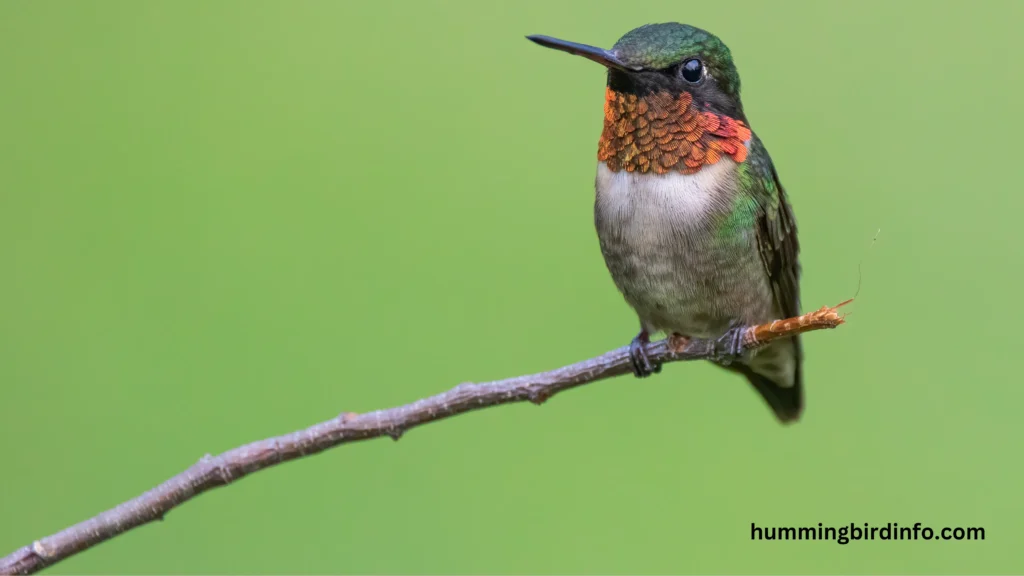
The Uncertain Future and Role of Research
Scientific understanding of avian influenza in hummingbirds is still limited. There are no large-scale studies confirming their susceptibility—or resistance.
Their isolated feeding behavior may help protect them, but changing environments and expanding virus ranges could introduce new risks over time.
More research and monitoring are needed to fully grasp the threat level. Until then, cautious and responsible bird-feeding practices are our best defense.
As climates shift and migratory routes evolve, our interaction with wild birds changes. This highlights the urgent need for vigilance, both in science and at home.
Protecting hummingbirds requires a blend of curiosity, compassion, and common sense. Every clean feeder and reported sick bird makes a difference.
Conclusion
Avian influenza poses a significant threat to many wild birds, but so far, hummingbirds seem to be at lower risk—though not entirely safe. Their unique lifestyle may shield them somewhat, but caution is still warranted.
Because of their fragile physiology, hummingbirds could be severely affected if infected. And as outbreaks become more common, we can’t assume immunity without research.
Keep feeders clean, observe your birds closely, and stay updated on local outbreak alerts. This small effort helps preserve the health of these tiny wonders.
The natural world is full of mysteries. By asking questions like “Do hummingbirds get bird flu?”, we deepen our role as caretakers in a shared, fragile ecosystem.
FAQs:
Can hummingbirds catch avian influenza?
There is no strong evidence they do, but they are not immune, and research is still ongoing.
How does bird flu spread among birds?
Mainly through contact with infected feces, secretions, and contaminated surfaces like feeders and birdbaths.
What are the symptoms of bird flu in birds?
Symptoms include sudden death, respiratory problems, diarrhea, and neurological issues like tremors.
Are songbirds like hummingbirds at high risk?
They are considered lower risk due to their feeding habits, but still susceptible under certain conditions.
Can I still use hummingbird feeders during an outbreak?
Yes, but ensure strict hygiene. Clean the feeders frequently and monitor for local advisories.
What should I do if I see a sick bird?
Avoid touching it and report it immediately to your local wildlife authorities.

